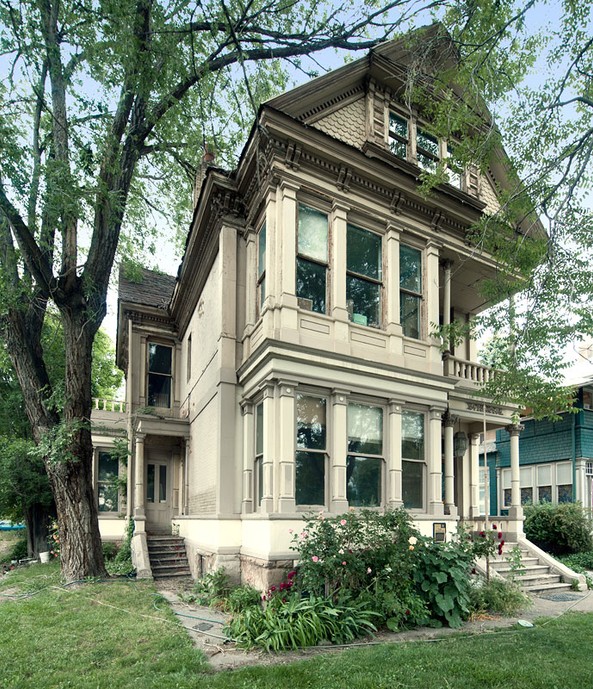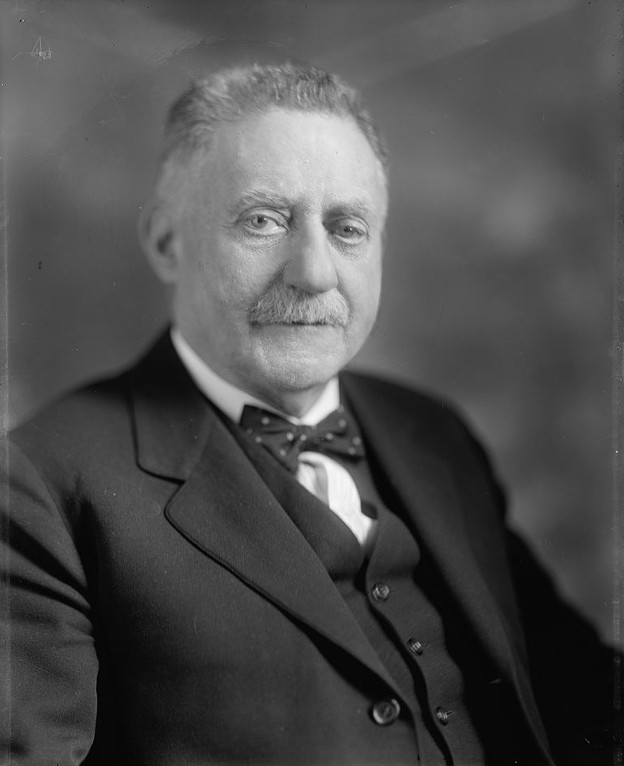Simon Bamberger House
Introduction
Text-to-speech Audio
The fourth governor of Utah, Simon Bamberger (1845-1926; in office 1917-1921)), built this historic residence in the 1880s. It is now occupied by a property management company. Bamberger, who was Jewish, was born in Germany and became a successful businessman in Utah by investing primarily in mining and establishing a railroad from Salt Lake City to Ogden. As governor, he oversaw the establishment of a public utilities commission, passed a workmen's compensation law, developed social and education programs, and passed a statewide prohibition law.
Images
Utah's fourth governor, Simon Bamberger, built this house in the 1880s. A successful businessman, he was as elected Utah's fourth governor in 1916 and implemented a number of progressive policies.

Simon Bamberger (1845-1926)

Backstory and Context
Text-to-speech Audio
Simon Bamberger was born on February 27, 1845 in a village between Frankfurt and Heidelberg in Germany. He immigrated to the United States in 1859 and made his way to Indianapolis where a cousin lived. Bamberger worked there through the end of the Civil War. During that time his brother, Herman, immigrated as well. They opened a small clothing store in Wilmington, Ohio and within the next couple of years moved to St. Louis where they expanded the business. On a trip to Wyoming to collect a debt, Bamberger learned the store had failed. No longer seeing a future in St. Louis, he realized his best option was to move to Utah.
He arrived in Odgen, Utah in 1869 and became the manager of a company store for the Union Pacific Railroad. He also helped build the housing (shacks and tents) for railroad workers in construction camps. After a smallpox outbreak prevented passengers from coming to Ogden, he settled in Salt Lake City. There, he and a partner bought a hotel and they renamed it the "White House" and it primarily catered to those in the mining industry. Two years later, Bamberger bought an interest in a mine that made him wealthy. In 1876, he built railroad lines to some mines he invested in and nearby small towns. These investments were not successful and he lost a lot of money. However, in 1892 Bamberger established a successful railroad eventually called the Bamberger Railroad that ran between Ogden and Salt Lake City (it operated until 1952).
Bamberger, who was a Democrat, entered politics in 1898 when he was appointed to the city's board of education. Four years later he was elected to the state senate which was dominated by Republicans. He ran for governor in 1916 and won thanks in large part due to the support from Mormons, who respect Judaism. He was, in fact, until that point the first non-Mormon (and the first Democrat) to become governor. Among his accomplishments listed above, Bamberger also balanced the state budget, prohibited utility companies from giving gifts to public officials, and implemented water conservation policies.
He died in 1926 and was buried at the cemetery of Congregation B'nai Israel, where he had been a member. The house is currently occupied by a property management company. It was added to the National Register of Historic Places in 1975.
Sources
Roberts, Allen D. "Simon Bamberger House." National Park Service - National Register of Historic Places Nomination Form. May 30, 1975. https://npgallery.nps.gov/NRHP/GetAsset/NRHP/75001814_text.
"Simon Bamberger (1845-1926)." Jewish Virtual Library. Accessed September 6, 2023. https://www.jewishvirtuallibrary.org/simon-bamberger.
Wikimedia Commons: https://commons.wikimedia.org/wiki/File:Bamberger_house_salt_lake_city.jpg
